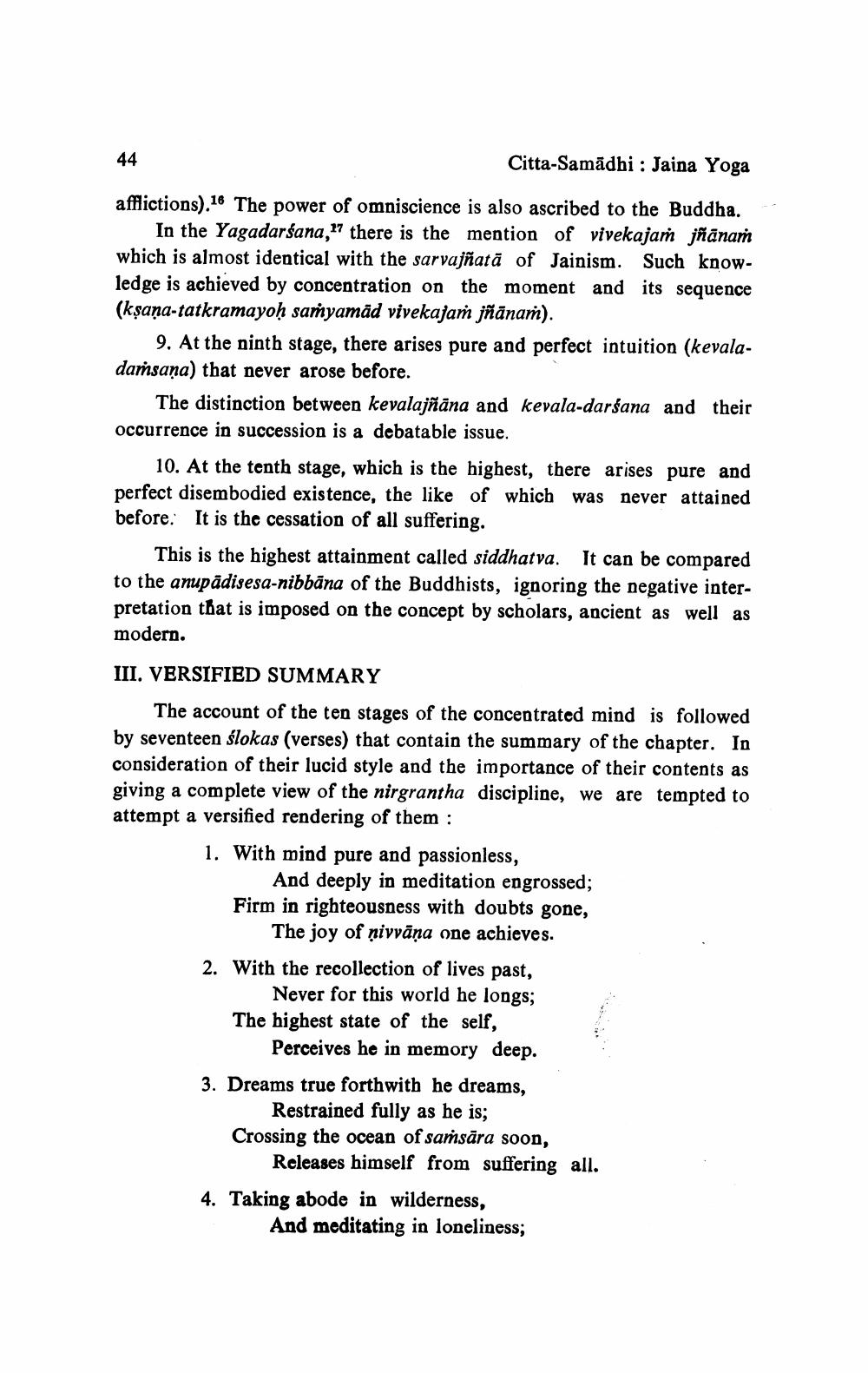________________ Citta-Samadbi : Jaina Yoga * afflictions).16 The power of omniscience is also ascribed to the Buddha. In the Yagadarsana, 17 there is the mention of vivekajam jnanam which is almost identical with the sarvajnata of Jainism. Such knowledge is achieved by concentration on the moment and its sequence (ksana-tatkramayoh samyamad vivekajam jnanam). 9. At the ninth stage, there arises pure and perfect intuition (kevaladarsana) that never arose before. The distinction between kevalajnana and kevala-darsana and their occurrence in succession is a debatable issue. 10. At the tenth stage, which is the highest, there arises pure and perfect disembodied existence, the like of which was never attained before. It is the cessation of all suffering. This is the highest attainment called siddhatva. It can be compared to the anupadisesa-nibbana of the Buddhists, ignoring the negative interpretation that is imposed on the concept by scholars, ancient as well as modern. III. VERSIFIED SUMMARY The account of the ten stages of the concentrated mind is followed by seventeen slokas (verses) that contain the summary of the chapter. In consideration of their lucid style and the importance of their contents as giving a complete view of the nirgrantha discipline, we are tempted to attempt a versified rendering of them : 1. With mind pure and passionless, And deeply in meditation engrossed; Firm in righteousness with doubts gone, The joy of nivvana one achieves. 2. With the recollection of lives past, Never for this world he longs; The highest state of the self, Perceives he in memory deep. 3. Dreams true forthwith he dreams, Restrained fully as he is; Crossing the ocean of samsara soon, Releases himself from suffering all. 4. Taking abode in wilderness, And meditating in loneliness;




